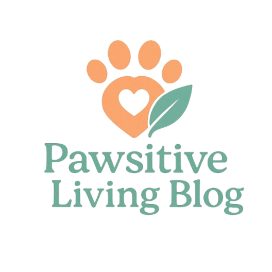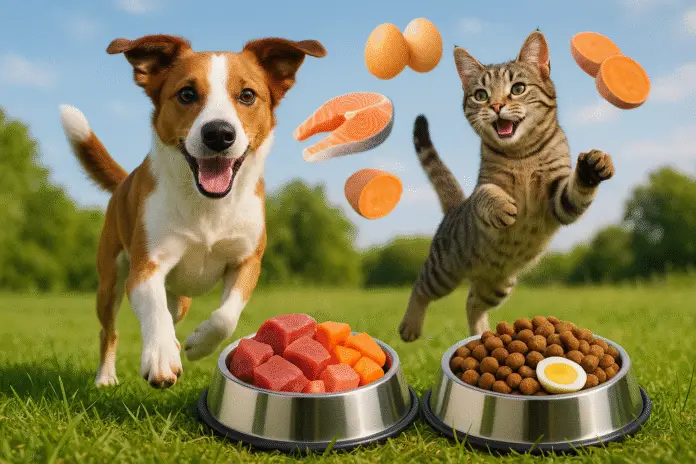Active pets bring energy, joy, and enthusiasm to our lives. Whether it’s a dog that joins you on morning runs, a cat that sprints around the house, or a working or sporting animal, they require special attention when it comes to nutrition. A balanced, energy-supportive diet is critical to keep their tails wagging and paws moving.
In this comprehensive guide, we’ll explore what makes up an ideal diet for active pets, how to tailor meals to energy levels, and which ingredients to prioritize. Let’s dig into the world of active pet nutrition.
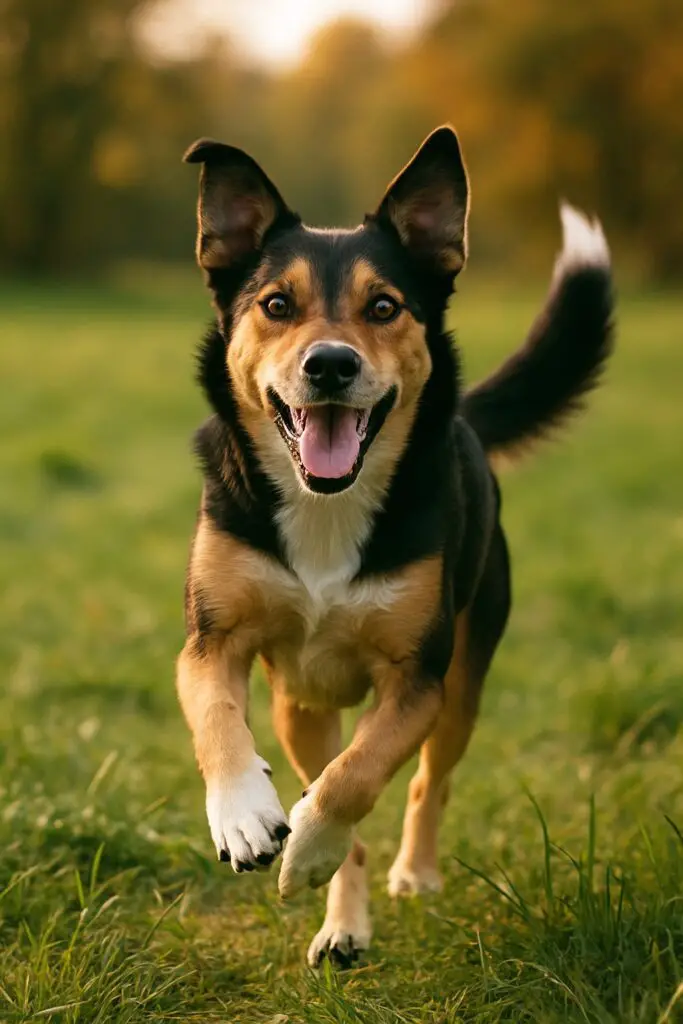
Why Nutrition Matters More for Active Pets
Just like humans, a pet that exercises more requires more fuel. If your pet is active—through play, exercise, training, or work—their muscles, metabolism, and organs are all working harder. Poor nutrition can lead to lethargy, muscle loss, or even long-term health issues.
Providing the right nutrients means:
- Sustaining energy levels throughout the day
- Maintaining lean muscle mass
- Supporting recovery after intense activity
- Strengthening the immune system
Key Components of an Energy-Boosting Diet
1. High-Quality Protein: Muscle Maintenance & Recovery
Why it matters: Protein is the cornerstone of every active pet’s diet. It helps build and repair muscles and supports enzymes and hormone production.
Sources to include:
- Chicken
- Turkey
- Beef
- Lamb
- Salmon
- Eggs
Aim for a pet food with real meat as the first ingredient, and avoid by-products. For extremely active dogs, diets with 28–32% protein content are optimal.
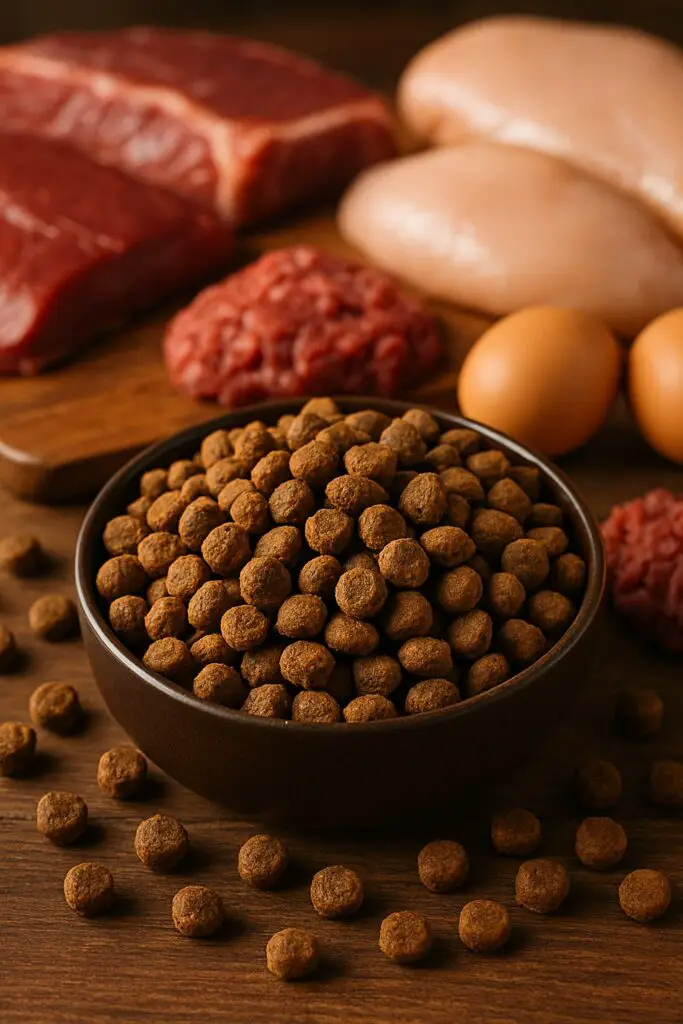
2. Healthy Fats: Long-Lasting Energy
Why it matters: Fats are the most calorie-dense nutrient, offering more than twice the energy per gram compared to protein or carbs. They fuel endurance.
Good sources of fat:
- Fish oil (also supports coat health)
- Chicken fat
- Flaxseed oil
- Coconut oil
Fats also help absorb fat-soluble vitamins like A, D, E, and K. Look for foods with 15–20% fat content for active pets.
3. Complex Carbohydrates: Fuel for Quick Bursts
Why it matters: While not essential for all pets, carbohydrates provide readily available energy and help replenish glycogen stores after activity.
Top picks:
- Brown rice
- Oats
- Barley
- Sweet potatoes
- Pumpkin
Carbohydrates also add dietary fiber, which supports digestive health—a key factor in sustained energy and nutrient absorption.
4. Hydration: The Forgotten Power Source
Hydration is critical, especially in warm climates or for dogs that run or work outdoors. Even slight dehydration can affect performance and recovery.
Tips:
- Ensure fresh water is always available.
- Consider adding low-sodium broth to meals.
- Wet food can help increase water intake.
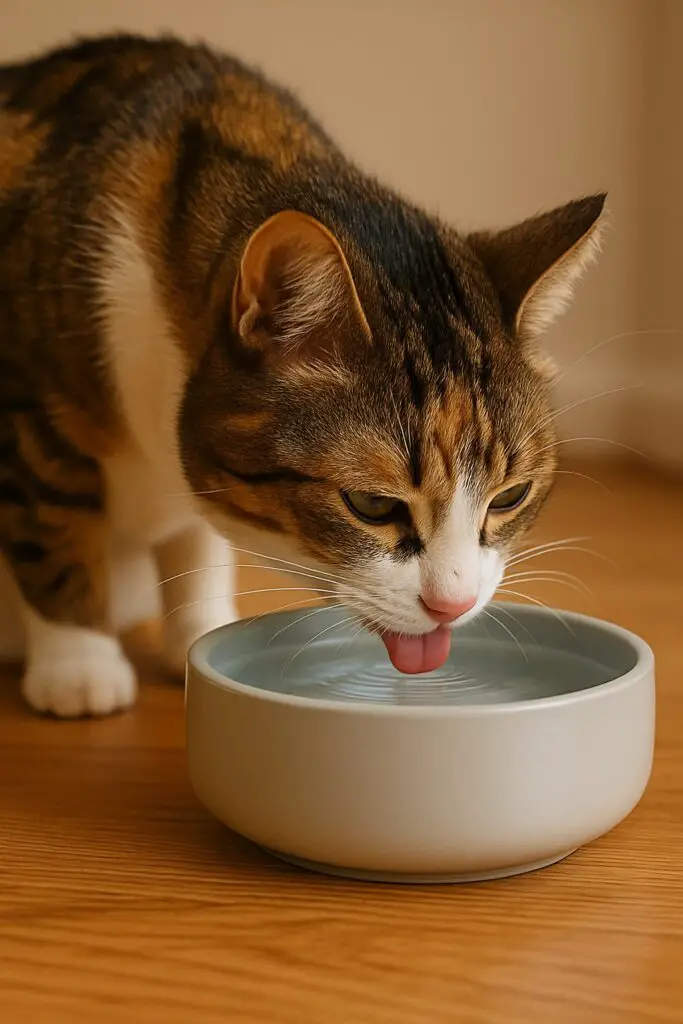
5. Vitamins and Minerals: Supporting Active Systems
Pets on high-energy diets need a full spectrum of vitamins and minerals to keep joints, bones, immune systems, and metabolism functioning optimally.
Key nutrients:
- Calcium and phosphorus (for bones)
- B-vitamins (for energy metabolism)
- Vitamin E and selenium (antioxidants)
- Omega-3 fatty acids (anti-inflammatory)
Choose complete and balanced pet foods that meet AAFCO (Association of American Feed Control Officials) standards.
Tailoring Meals to Activity Level
Not all active pets are the same. A high-performance sled dog will need different fuel than a Labrador who plays fetch twice daily.
Activity-based diet tips:
| Activity Level | Calories Needed | Diet Type |
|---|---|---|
| Low (1hr light play) | Normal | Standard maintenance diet |
| Moderate | +20% | High-protein kibble with added fats |
| High | +40–60% | Performance diets with 30% protein, 20% fat |
Talk to your vet about exact caloric requirements, especially if your pet is overweight or has medical conditions.
Signs Your Pet Needs a Diet Change
Watch for these red flags indicating that your active pet’s diet might not be adequate:
- Lethargy after mild activity
- Unexplained weight loss
- Dull or thinning coat
- Increased appetite without weight gain
- Trouble recovering from exercise
If you notice any of the above, you may need to adjust calorie intake, improve nutrient quality, or switch to performance-focused foods.
Homemade Meals vs Commercial Diets
Commercial High-Energy Diets:
- Balanced and convenient
- Scientifically formulated
- Ideal for consistency and performance
Homemade Energy-Rich Meals:
- Offer control over ingredients
- Require supplementation to ensure balance
- Best when formulated with vet or pet nutritionist guidance
Avoid feeding exclusively raw eggs, unbalanced raw meats, or high-fat trimmings without professional advice.

Supplements for Active Pets (Use With Caution)
While a well-balanced diet is usually enough, some pets may benefit from:
- Glucosamine & chondroitin (joint support)
- Probiotics (digestive health)
- Electrolytes (post-workout hydration)
- Fish oil (anti-inflammatory & coat health)
Always check with your vet before adding supplements to your pet’s routine.
Meal Timing for Maximum Energy
When to feed:
- Avoid feeding right before intense exercise (wait 1–2 hours)
- Feed a larger meal after workouts for recovery
- Smaller snacks/treats can be given pre-activity for fuel
Split meals into 2–3 portions daily to keep energy levels stable and prevent bloating (especially in large breeds).
Final Thoughts: Feed With Purpose
Feeding your active pet isn’t just about quantity—it’s about quality, timing, and understanding their energy demands. Choosing the right combination of protein, fats, carbs, vitamins, and hydration makes a massive difference in your pet’s endurance, health, and happiness.
By prioritizing active pet nutrition, you’re setting the foundation for a life full of adventure, play, and long-term vitality.



